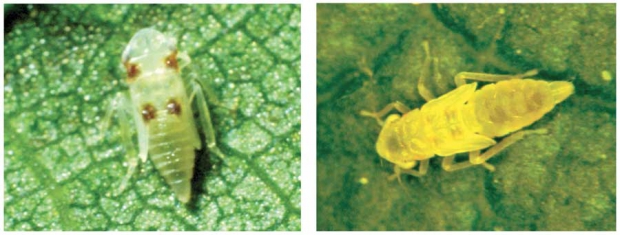Insect Disease Control Study Manual Wsu
Studying for exams. All exams are based on the recommended study materials listed below. Training classes are not required in order to sit for exams. View study materials for Agriculture: Herbicide. This category exam covers the use of pesticides for the control of pests, such as insects, mites and ticks on livestock. PesT, weed aNd disease coNTrol. Create a healthy garden to stop pest problems before they start. Healthy plants and soils not only resist pests and diseases. Watering guide.*. Remove weeds and yard debris that can harbor pests and disease. Fallen leaves and fruit from diseased plants should be put in. This Insect and Disease Control Study Packet contains a study manual and a plant diseases publication. The manual provides information on nonchemical, chemical and integrated pest management (IPM) approaches to control insects and diseases of agricultural crops. Discussions of insects, insecticides and fungicides.

Kingdom of Sa'udi Al-Mamlakah al-'Arabiyah as-Sa'udiyah CAPITAL: (Ar-Riyad) FLAG: The national flag bears in white on a green field the inscription, in Arabic, 'There is no god but, and Mohammad is the messenger of Allah. G Force 1 0 0 1 Cracked more. ' There is a long white sword beneath the inscription; the sword handle is toward the fly. ANTHEM: The National Anthem is a short instrumental selection. MONETARY UNIT: The Saudi riyal (sr) is divided into 20 qursh (piasters), in turn divided into 5 halalah.
There are coins of 1, 5, 10, 25, 50, and 100 halalah and notes of 1, 5, 10, 50, 100, and 500 riyals. Sr1 = $0.26667 (or $1 = sr3.75) as of 2005. WEIGHTS AND MEASURES: The metric system has been officially adopted. HOLIDAYS: religious holidays include 1st of Muharram (Muslim New Year), 'Id al-Fitr, and 'Id al'Adha'.
How To Do A Clean Install Of Windows 8 64 Bit. TIME: 3 pm = noon GMT. Saudi Arabia's natural environment was threatened by the Persian Gulf War. The dumping of up to six million barrels of oil in the surrounding waters and the destruction of Kuwait's oil wells by fire polluted the nation's air and water. Saudi Arabia has about 2 cu km of renewable water resources, with 90% of annual withdrawals used for farming and 1% used for industrial purposes. Only about 64% of the nation's rural population has access to safe drinking water.
At current rates of consumption, it has been estimated that the nation's water supply may be exhausted in 10 –20 years. Saudi Arabia's cities produce an average of 4.8 million tons of solid waste per year. The Directorate General for Environmental Protection is responsible for environmental protection measures and preservation of natural resources. In the late 1970s, the 'Asir Kingdom Park, in the southwest, was created to preserve the landforms, flora, and fauna of the 'Asir region, which forms part of the Great Rift Valley. Drakensberg Park became a UNESCO World Heritage Site in 2000.
According to a 2006 report issued by the International Union for Conservation of Nature and Natural Resources (IUCN), threatened species included 9 types of mammals, 17 species of birds, 2 types of reptiles, 9 species of fish, 1 species of invertebrate, and 3 species of plants. Threatened species in Saudi Arabia include the Asiatic cheetah (possibly extinct), South Arabian leopard, northern bald ibis, and two species of turtle (green sea and hawksbill). The Arabian gazelle, Queen of 's gazelle, Saudi gazelle, and the Syrian wild ass have become extinct. The population of Saudi Arabia in 2005 was estimated by the United Nations (UN) at 24,573,000, which placed it at number 46 in population among the 193 nations of the world. In 2005, approximately 3% of the population was over 65 years of age, with another 37% of the population under 15 years of age. There were 117 males for every 100 females in the country. According to the UN, the annual population rate of change for 2005 –10 was expected to be 2.7%, a rate the government viewed as satisfactory.
The projected population for the year 2025 was 37,160,000. The overall population density was 12 per sq km (30 per sq mi), but much of the population is concentrated on the coasts or internal oases; desert regions are largely uninhabited. The UN estimated that 86% of the population lived in urban areas in 2005 and that urban areas were growing at an annual rate of 2.95%. The capital city, Riyadh (Ar-Riyad), had a population of 5,126,000 in that year. Estimates of the population in other major metropolitan areas were as follows: Jeddah, the principal port, 3,807,000; and (Makkah), containing 's holiest shrine, 1,529,000. Other major cities include Medina (Al-Madinah), the second-holiest city of Islam, 1,044,000; Ad Damm ām, 920,000; A ţ T ā'if, 416,121; and Al Huf ūf, 225,847. Emigration is limited.
Immigration of professionals, technicians, and others from the surrounding Arab states and growing numbers from outside the region have been spurred by the development of the oil industry and by the lack of adequately trained and educated Saudi personnel. Palestinian Arabs, displaced by the establishment of the state of Israel, are the chief immigrant group. In the early 1990s, there were significant numbers of expatriate workers from the United States, European countries,, Jordan,, Jordan, Kuwait, Yemen, the Republic of (ROK),, India,, and the. In 1990, when Iraq invaded Kuwait, Saudi Arabia reacted by expelling workers from Jordan, Yemen, and, for their countries' support of Iraq. The foreign population was 4,624,459 in 1992 (27% of the total population). After the Gulf War, 93,000 Iraqis were granted temporary asylum.